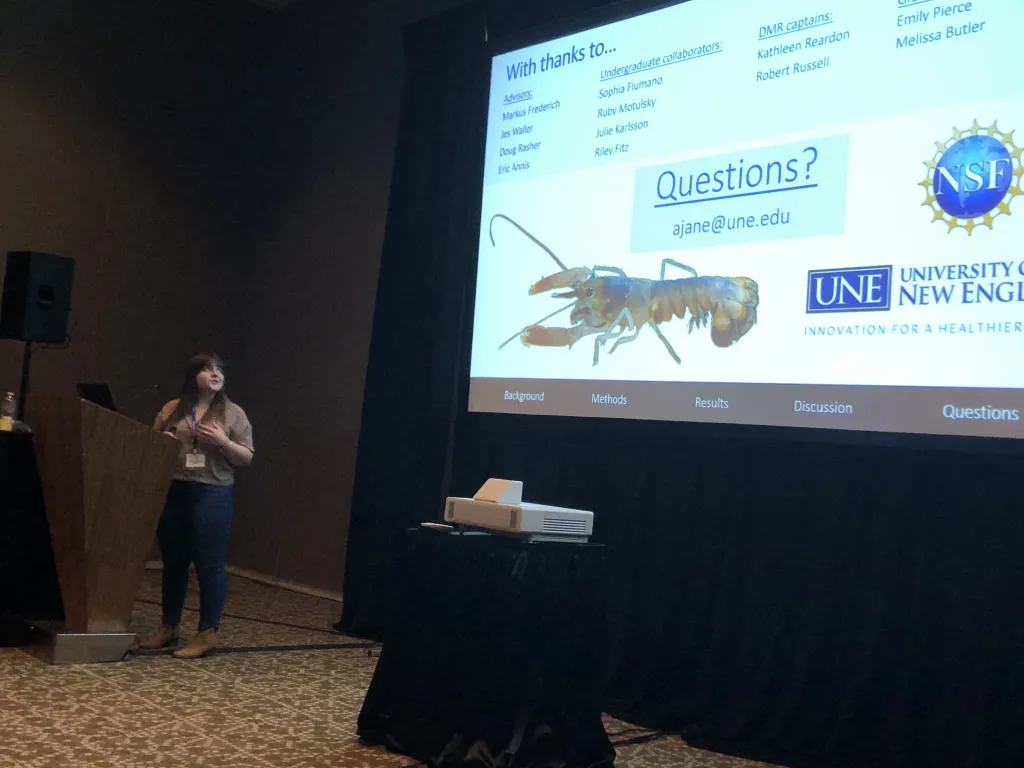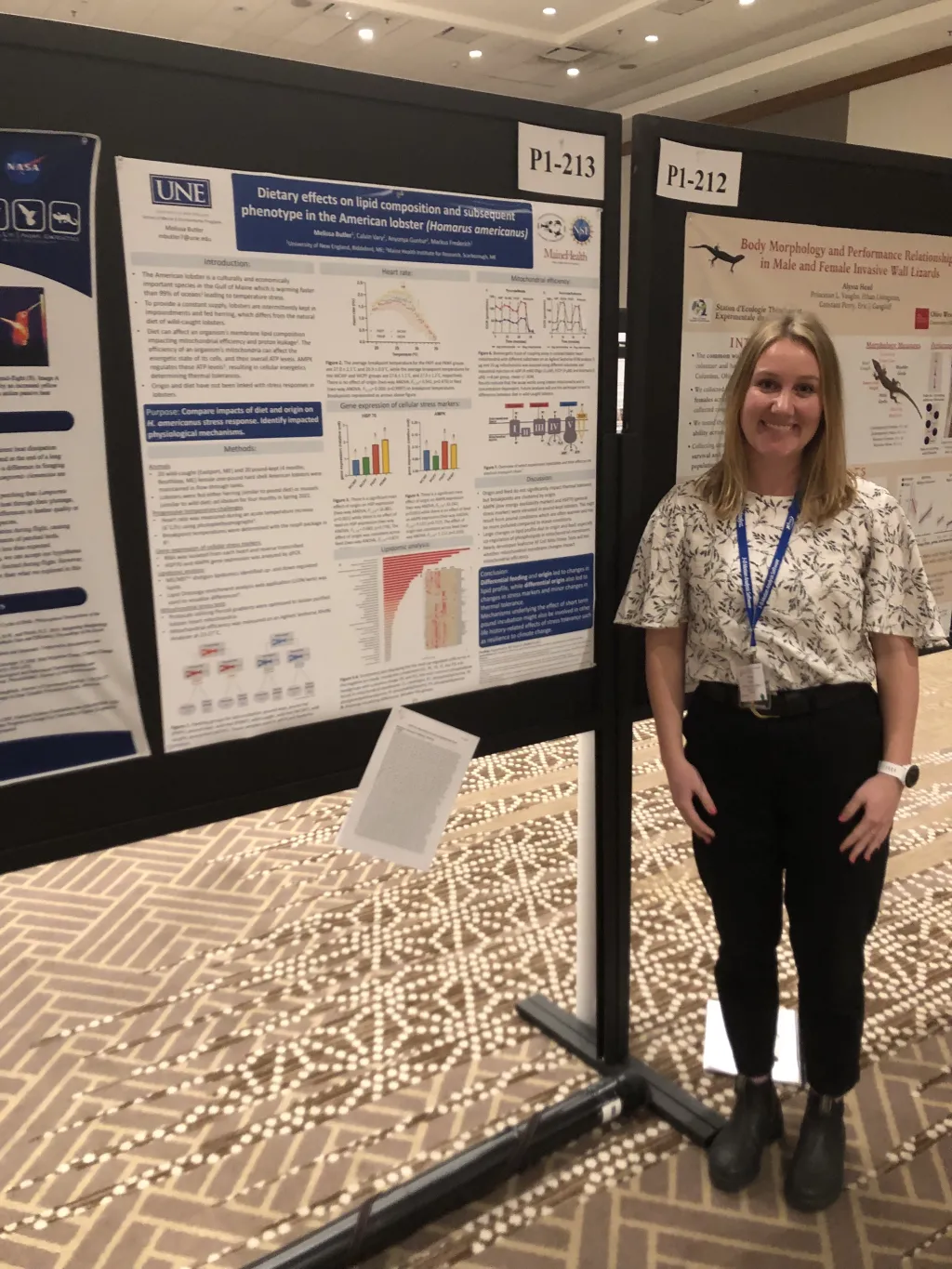Students in the Frederich Lab present at national biology conference in Texas

Several students in the Invertebrate Physiology Lab (the Crab Lab) of Markus Frederich, Ph.D., professor of marine sciences, recently presented talks and posters at the Society of Integrative and Comparative Biology (SICB) conference in Austin, Texas.
The SICB conference, held annually, draws close to 2,000 scientists from across the country. Students from the Crab Lab presented research on several topics:
- Aubrey Jane, B.S. ’20 (Marine Sciences), (M.S. Marine Sciences, ’23) gave a talk entitled “Ontogenetic shifts in thermal tolerance of the American lobster, Homarus americanus.” This project is part of her master’s thesis and is funded through Frederich’s National Science Foundation (NSF) research grant on lobster thermal physiology
- Julie Karlsson presented her poster, titled “Cardiac performance as a function of temperature in larval American lobsters (Homarus americanus).” Karlsson is an undergraduate student at Hood College but is co-advised by Frederich and other co-principal investigators of his lobster NSF research grant.
- Melissa Butler (M.S. Marine Sciences, ’23) presented her poster “Dietary effects on lipid composition and subsequent phenotype in the American lobster.” This project, in collaboration with the MaineHealth Institute for Research, is part of her master’s thesis.
Additionally, Emily Pierce, M.S., B.S., presented her research on environmental DNA (eDNA), which is organismal DNA found in the environment that originates from cellular material shed by organisms, such as skin or excrement.
Pierce, a Ph.D. candidate at the University of Maine who is conducting her through Frederich’s lab, gave a talk entitled “Squishy versus crunchy: physical characteristics affect invasive species detection using environmental DNA.”
Pierce’s project is funded through Frederich’s NSF EPSCoR grant and is part of her Ph.D. thesis.
Her presentation showed that body characteristics, such as how crunchy or squishy an animal is, help determine eDNA shedding rates.
“If [an organism] is squishy, it’s easier to detect with molecular techniques,” she said. “I hope this tool can be used to detect invasive species in other habitats as they continue to spread.”
Her presentation also won her the Mary Rice Best Student Presentation Award.
“It was an honor to win this award, especially given the excellent presentations I was up against,” Pierce commented.
Housed in UNE’s Marine Science Center, Frederich’s lab investigates crustacean physiology, invertebrate biology, and marine invasive species. Currently, four graduate and about 10 undergraduate students explore techniques to detect and monitor native and invasive invertebrate species using eDNA, thermal tolerance of larval lobsters through oxygen consumption, gene and protein expression, the effect of ocean acidification on eDNA release in crabs, and the comparison of different theoretical frameworks of thermal tolerance.
Frederich said taking students to conferences is always a highlight of the year.
“Seeing how students present their hard work to other scientists and discuss the science makes me so proud,” he remarked.

Emily Pierce presents her research

Aubrey Jane presents her project

Melissa Butler poses with her poster